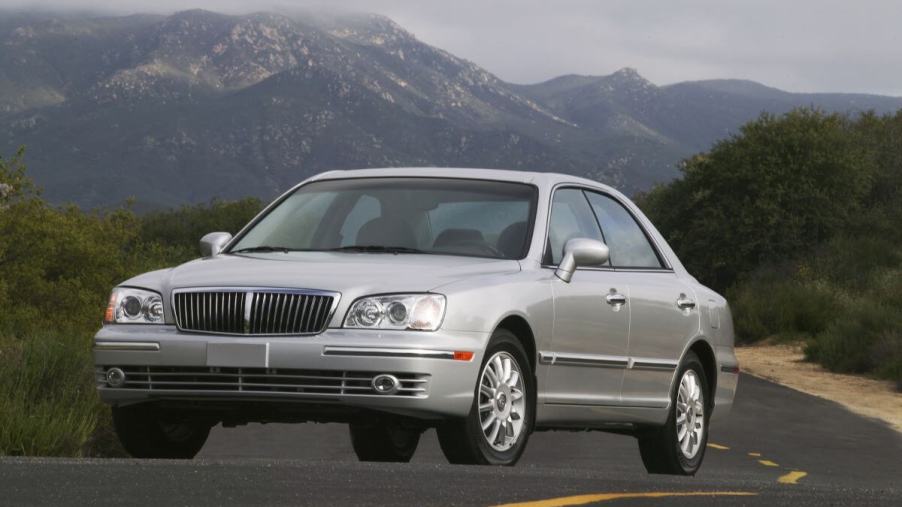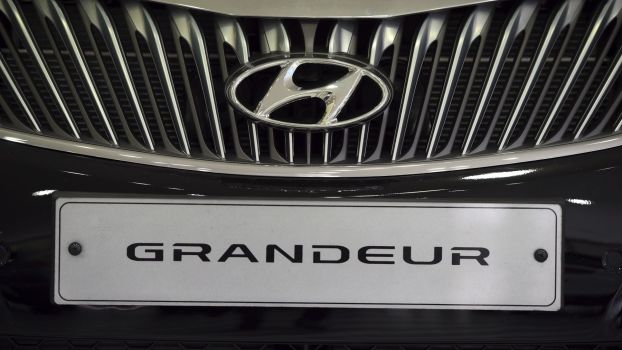
The Forgotten Hyundai XG350 Lived On Under a Different Name
Having barely recovered from a tarnished reputation and slumping sales in the late 1990s, Hyundai boldly launched its biggest and most expensive car ever for the U.S. market. In 2001, the brand began exporting a model called the XG300, which only lasted a single year before Hyundai punched out the V6 engine’s displacement from 3.0 liters to 3.5 liters, hatching the XG350.
Even though the XG350 was entirely forgettable, it morphed into the near-luxury Azera after a few years, which served as proof of concept for creating Hyundai’s luxury brand, Genesis.
Looking back on the forgettable Hyundai XG350
About 25 years ago, Hyundai was going through a rough patch. Its cars were quickly gaining a reputation for being unreliable, sales were in a slump, and dealerships were abandoning the brand. To regain consumers’ confidence, Hyundai staged a $25 million advertising campaign highlighting the 10-year or 100,000-mile powertrain warranty that would protect every new Hyundai.
The ploy worked, and before too long, Hyundai was expanding its lineup in America, including its large-ish XG350. A 2004 Car and Driver article mentions that while expensive for a Hyundai, the Maybach lookalike XG350 could still be acquired for less than $25,000 (about $40,000 in today’s money) if buyers didn’t go crazy checking option boxes.
The 194 horsepower from the XG350’s 3.5-liter V6 was enough oomph to pull the front-wheel-drive sedan from 0 to 60 mph in a respectable 8.1 seconds. Even though the XG350 was well equipped with many standard features such as leather upholstery, Car and Driver commented that the interior felt dated, and overall, the car was inferior to class leaders like the Honda Accord.
The Hyundai XG350 evolved into the Azera
For the 2006 model year, the Hyundai XG350 was completely redesigned. With that came a new name: the Azera. Since the outgoing large sedan never truly succeeded in stealing thunder from the Toyota Avalon, Nissan Maxima, or other competitors, Hyundai really upped its game with the Azera.
The styling was considerably sleeker and more modern than the car it replaced, but the even bigger news was a chassis that was 68% stiffer and a 3.8-liter V6 engine with 263 horsepower — a 69-hp boost over the XG350. In a review of the brand new 2006 Azera, MotorWeek commented on how much more refined and quiet it was compared to the XG350, as well as being roomier for its passengers.
The Azera was redesigned again for 2012, but sales were beginning to falter by this point, regardless of the car’s merit. Per the sales data site GoodCarBadCar, between 2009 and 2017, sales only exceeded 10,000 units in a single year and were typically more like 3,000 to 5,000 cars per year. Based on that, the Azera was pulled from the U.S. market post-2017.
Hyundai justified axing the Azera by correctly pointing out that it was being encroached on from above and below by other Hyundais. For example, the Sonata was growing upscale enough to blur the line between it and the Azera. Similarly, the newly developing Genesis brand was snagging luxury buyers who might otherwise have considered the Azera.
In a period MotorTrend press release, Hyundai explained, “The Genesis brand continues to broaden the appeal of its mid-luxury G80 and premium luxury G90 models with attributes appealing to buyers holding the Azera on the periphery of purchase consideration.”
Hyundai has the right mindset
Even though the Hyundai Azera née GX350 was never the huge success that the automaker might have hoped, it displayed to American buyers that the South Korean automaker had improved build quality and could produce more than just cheap econoboxes. Not to mention that it paved the way for launching a luxury brand with Genesis.
More recently, Hyundai has bucked the status quo with vehicles like the racy Veloster hatchback and the Santa Cruz, its ute-style pickup that’s presently the only challenger to Ford’s Maverick. Ditto for the Ioniq 5 and Ioniq 6 all-electric vehicles, which rival competitors costing significantly more. As a company, Hyundai is unrecognizable from the entity that brought us the GX350 20 years ago. Additionally, if recent behavior is any indication, we’ll be saying the same thing 20 years from now.




